🟢 Middle School Student-Friendly: Understanding Sora
😀 Author: Golden Legend's Great Wisdom Cyber Zen Heart Text / WebPilot Hugo API Images / DALL·E
Additional Reading Recommendation: Baoyu's Complete Translation "Video Generation Models: Building Simulators for Virtual Worlds"
Updated on 0229 Sora: Exploring the Past, Present, and Future Trends of Large Vision Models
Introduction
- Sora is a powerful video generation AI released by OpenAI early yesterday, aimed at exploring how AI can better understand real-world motion and interaction.
- The text part of this article is generated by WebPilot Hugo API without modification (joy).
- The examples/demonstrations in this article come from Sora's documentation, but Sora itself is not open for access (sorrow).
- After confirming with multiple friends from OpenAI, currently, Sora is not available for grayscale testing.
- Sora is awesome, highly recommend! ╰(‵□′)╯
Before diving into how Sora handles diverse visual data, let's first imagine a real-life scenario: you are flipping through an album of world landmarks. This album contains photos of different countries and styles of scenery, some of wide ocean views, some of narrow alleys, and some of brightly lit cityscapes at night. Despite the varied content and styles of these photos, you can easily recognize the location and emotion each photo represents because your brain can uniformly understand these different visual pieces of information.
Now, let's compare this process to how Sora handles diverse visual data. The challenge Sora faces is like processing and understanding millions of images and videos from around the world, captured by different devices. These visual data differ in resolution, aspect ratio, color depth, etc. To enable Sora to understand and generate such rich visual content like the human brain, OpenAI developed a method to convert these different types of visual data into a unified representation.

Firstly, Sora uses a technique called "video compression network" to compress the input images or videos into a lower-dimensional representation. This process is similar to "standardizing" photos of different sizes and resolutions, making them easier to handle and store. This does not mean ignoring the uniqueness of the original data, but converting them into a format that Sora can more easily understand and operate.
Next, Sora further decomposes this compressed data into so-called "spacetime patches." These patches can be seen as the basic building blocks of visual content, just like each photo in our album can be decomposed into small fragments containing unique landscapes, colors, and textures. This way, regardless of the original video's length, resolution, or style, Sora can process them into a consistent format.
Through this method, Sora can unify visual data from different sources and styles into an operational internal representation while retaining the richness of the original visual information. This is like you viewing the world landmarks album, where despite the diverse photos, you can still understand and appreciate them in the same way.
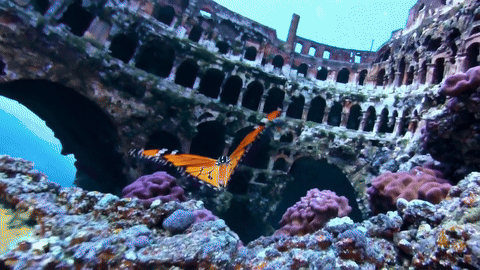
This ability to handle diverse visual data enables Sora to understand the intention behind text prompts like 'a cat sitting on the windowsill' and utilize its internal representation to generate videos or images matching the text prompts. It's like finding fragments from global visual data that can piece together the scene of "a cat sitting on the windowsill" you imagine, creating a new visual work.
Text-Conditioned Diffusion Model
Following the concept of spacetime patches, let's explore how Sora generates content based on text prompts. This process relies on a core technology called the "text-conditioned diffusion model." To understand this technology, let's use a daily life analogy: imagine you have a sketchbook filled with random scribbles that look meaningless. But if you gradually modify and optimize these scribbles according to a specific theme, like "garden," these random lines will eventually become a beautiful garden picture. In this process, your "specified theme" is like the text prompt, and the gradual optimization of the sketchbook is similar to how the diffusion model works.
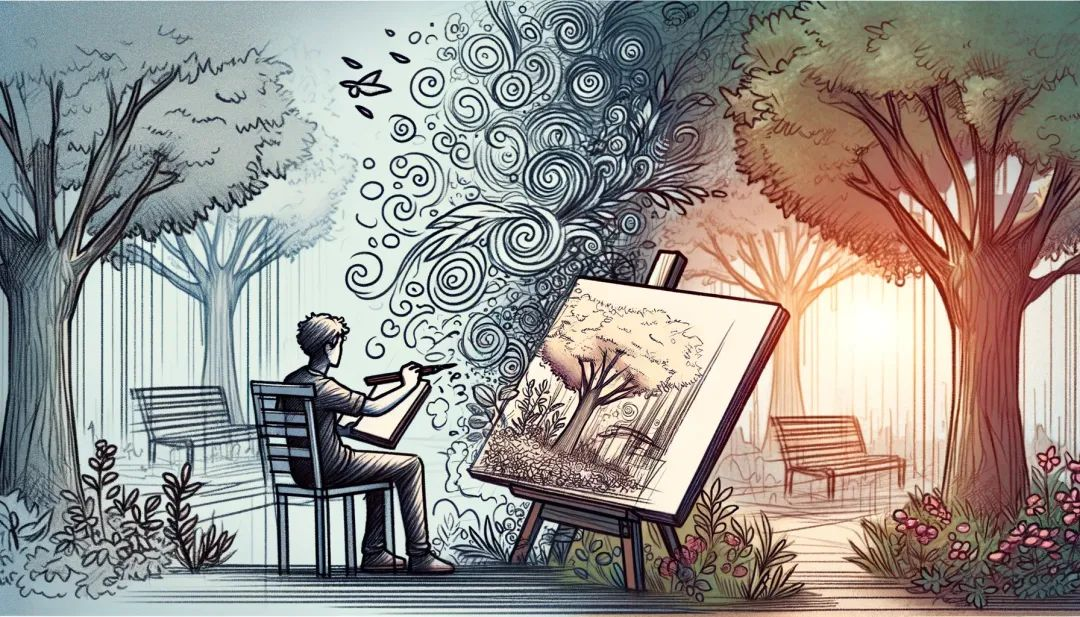
In Sora's implementation, this process starts with a video of the same length as the target video, but with completely random noise content. Think of this noisy video as the meaningless scribbles in the sketchbook. Then, Sora begins to "modify" this video based on the given text prompt (e.g., "a cat sitting on the windowsill watching the sunset"). During this process, Sora uses the knowledge learned from a large amount of video and image data to decide how to gradually remove the noise and transform the noisy video into content that matches the text description.
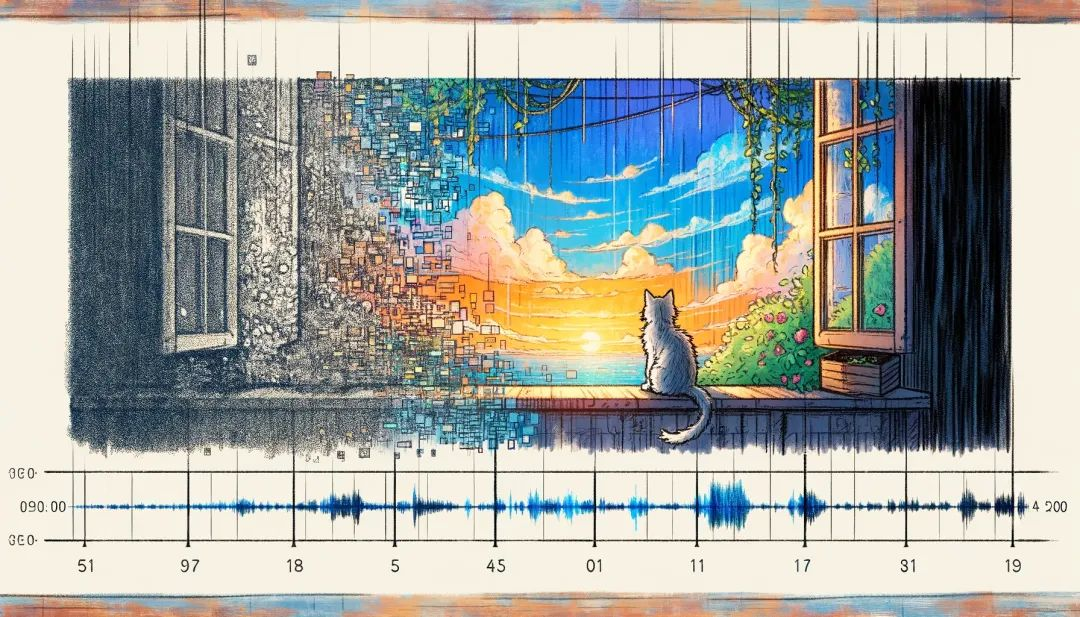
This "modification" process is not done in one go but completed through hundreds of progressive steps, each bringing the video closer to the final goal. A key advantage of this method is its flexibility and creativity: the same text prompt, through different initial states of noise or slight adjustments in the transformation steps, can generate visually different but textually consistent video content. This is like multiple artists creating different styles of paintings based on the same theme.
Through this text-conditioned diffusion model, Sora can generate highly creative videos and images while ensuring the generated content closely matches the user's text prompts. Whether simulating real-world scenes or creating fantasy worlds, Sora can "modify" amazing visual works based on text prompts.
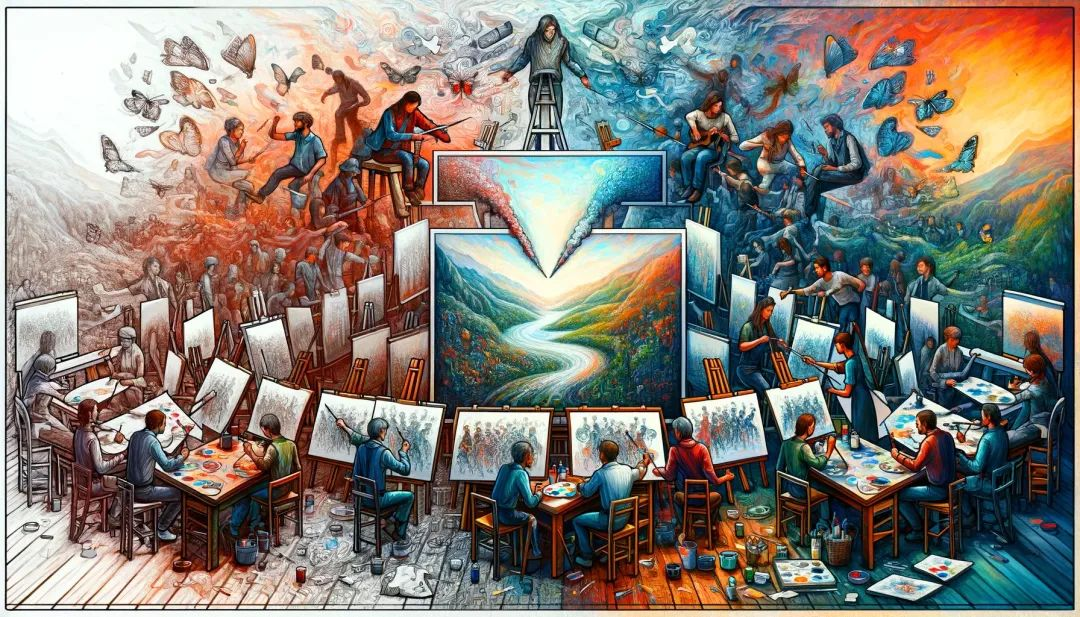
The text-conditioned diffusion model gives Sora powerful understanding and creativity, allowing it to bridge the gap between language and vision, turning abstract text descriptions into concrete visual content. This process not only showcases AI's progress in understanding natural language but also opens new possibilities in video content creation and visual arts.
Following this section, we will delve further into Sora's video generation process, particularly the role and importance of video compression networks and spacetime latent patches in this process.
Spacetime Patches
Before diving into how Sora generates videos through three key steps, let's first focus on the concept of spacetime patches. This concept is crucial for understanding how Sora handles complex visual content.
Spacetime patches can be simply understood as breaking down video or image content into a series of small blocks or "patches," each containing part of the spatiotemporal information. This method draws inspiration from techniques used to process static images, where images are divided into small blocks for more efficient handling. In the context of video processing, this concept is extended to the temporal dimension, containing not only spatial (i.e., parts of the image) but also temporal (i.e., changes in these areas over time) information.

To understand how spacetime patches work, we can borrow a simple analogy from daily life: imagine you are watching an animated movie. If we cut this movie into individual static frames and further cut each frame into smaller areas (i.e., "patches"), each small area will contain part of the picture's information. As time progresses, the information in these small areas changes with the movement of objects or changes in the scene, adding dynamic information to the temporal dimension. In Sora, these "spacetime patches" allow the model to handle each small fragment of video content more finely while considering their changes over time.
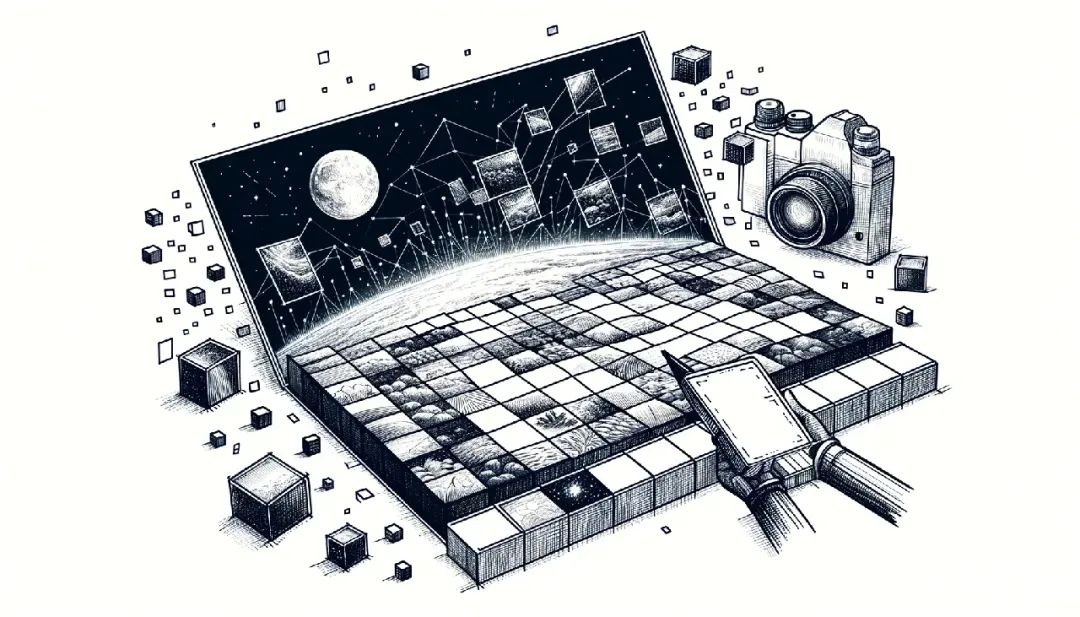
In the process of Sora handling visual content, spacetime patches are first generated through the video compression network. This network compresses the original video data into a lower-dimensional representation, a dense network of many small blocks. These small blocks are the "patches" we mentioned, each carrying a part of the video's spatial and temporal information.

Once these spacetime patches are generated, Sora can begin their transformation process. Using pre-trained transformers, Sora can recognize the content of each patch and make corresponding modifications based on the given text prompts. For example, if the text prompt is "a dog running in the snow," Sora will find patches related to "snow" and "running dog" and adjust them accordingly to generate video content matching the text prompt.
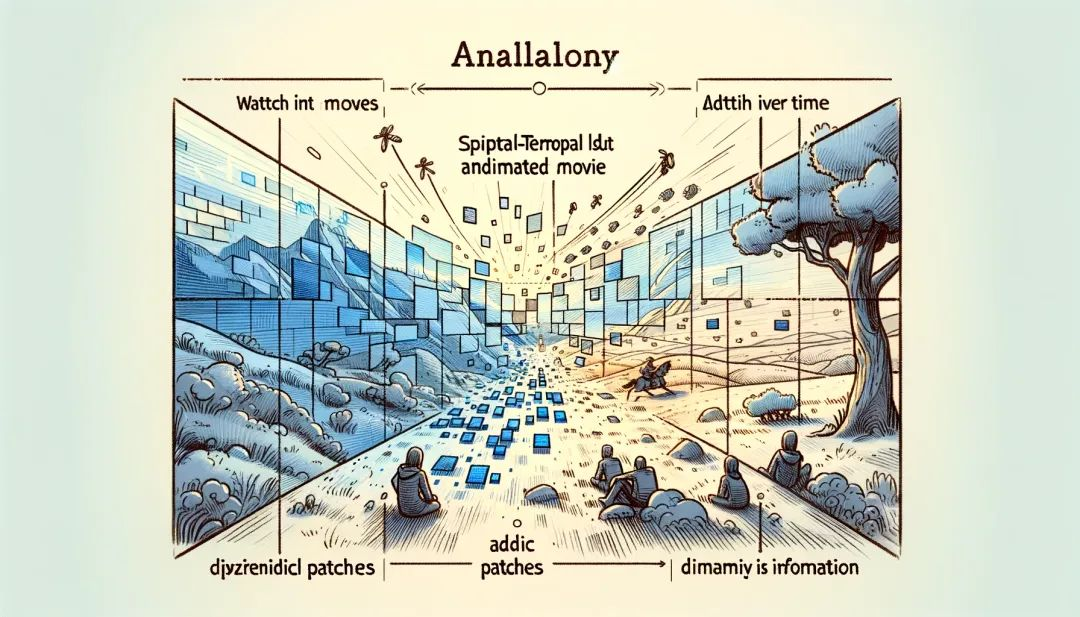
This patch-based processing method has several significant advantages. Firstly, it allows Sora to operate video content at a very fine level, as it can independently handle each small fragment of information in the video. Secondly, this method greatly enhances the flexibility of video processing, enabling Sora to generate high-quality videos with complex dynamics, a huge challenge for traditional video generation techniques. Additionally, by effectively managing and transforming these patches, Sora can create a variety of rich visual effects while ensuring the coherence of video content, meeting users' diverse needs.
As we delve deeper into Sora's video generation process, we can see that spacetime patches play a crucial role. They are not only the cornerstone of Sora's ability to handle and understand complex visual content but also a key factor in enabling Sora to efficiently generate high-quality videos. Next, we will explore further the video compression network and its relationship with spacetime latent patches, and their role and importance in the video generation process.
Video Generation Process
Following the introduction of spacetime patches, we will detail the three key steps in Sora's video generation process: video compression network, spacetime latent patch extraction, and video generation using Transformer models. Using a series of analogies, we will attempt to make these concepts more understandable.

Step 1: Video Compression Network
Imagine you are cleaning up and reorganizing a cluttered room. Your goal is to use as few boxes as possible to store all items while ensuring you can quickly find what you need in the future. In this process, you might pack small items into small boxes and then place these small boxes into larger ones. This way, you store the same amount of items in a more organized and compact space. The video compression network follows this principle. It "cleans up and organizes" a video's content into a more compact and efficient form (i.e., dimensionality reduction). This allows Sora to process more efficiently while retaining enough information to reconstruct the original video.
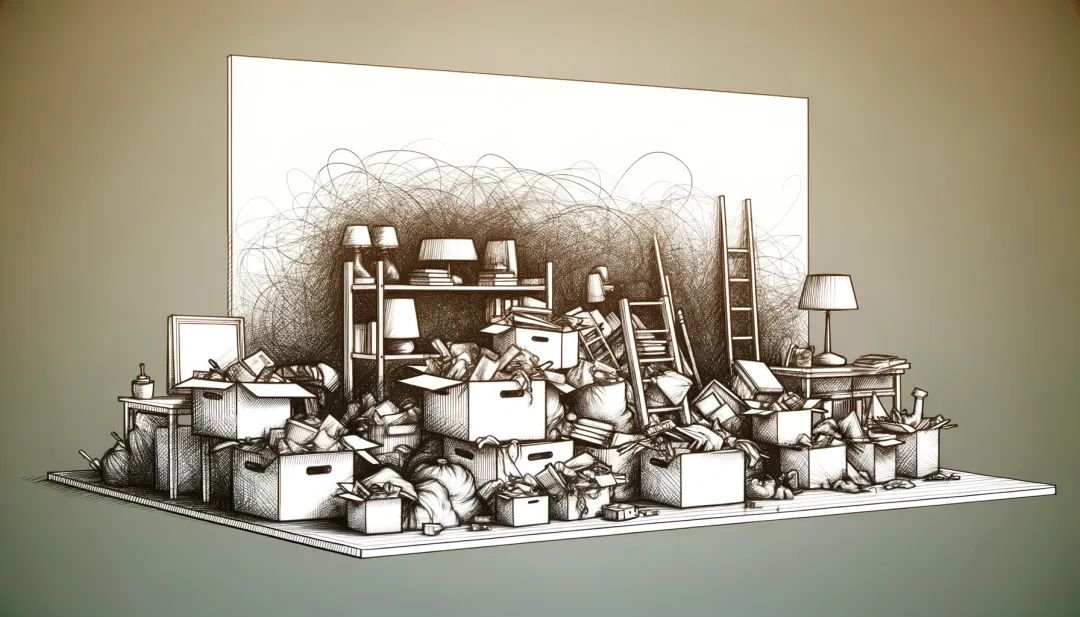
Step 2: Spacetime Latent Patch Extraction
Next, if you want to keep detailed records of what is in each box, you might write a list for each box. This way, when you need to retrieve an item, you can quickly locate which box it is in by checking the corresponding list. In Sora, a similar "list" is the spacetime latent patch. After processing through the video compression network, Sora breaks down the video into small blocks, each containing a small part of the video's spatial and temporal information, like a detailed "list" of the video content. This allows Sora to target and process each part of the video in the subsequent steps.
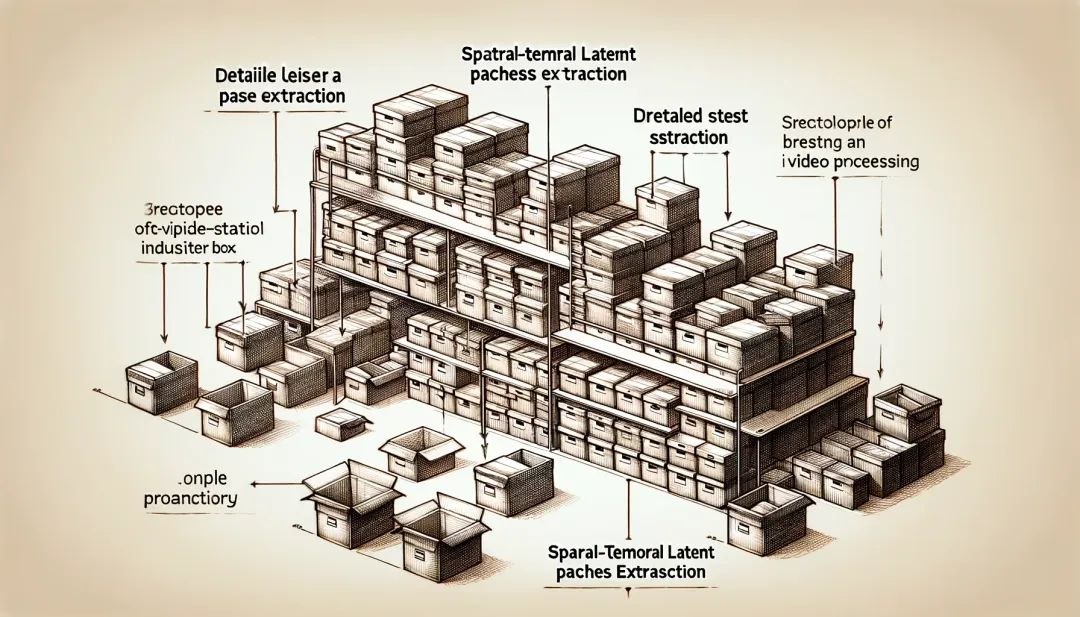
Step 3: Video Generation with Transformer Models
Finally, imagine you and your friends are playing a puzzle game, but the goal of the game is to assemble a picture based on a story. You first break down the story into several segments, each person responsible for one segment. Then, you choose or draw a part of the puzzle based on the story segment you are responsible for. Finally, everyone combines their puzzle parts to form a complete picture that tells the whole story. In Sora's video generation process, the Transformer model plays a similar role. It receives spacetime latent patches (i.e., "puzzle pieces" of the video content) and text prompts (i.e., "story") and decides how to transform or combine these pieces to generate the final video, thus telling the story in the text prompt.
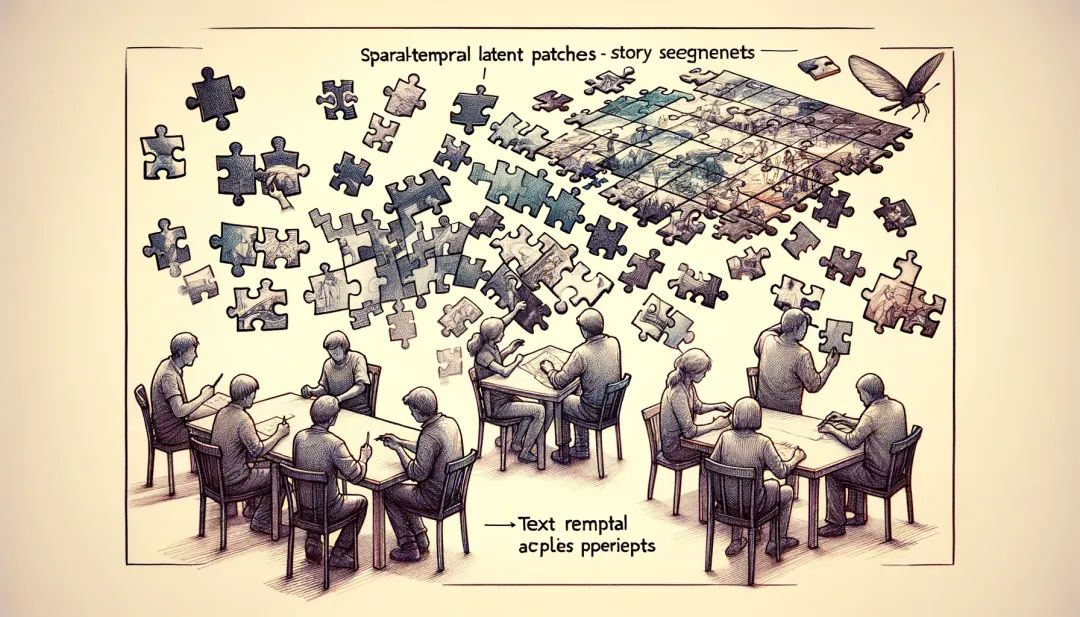
Through the collaborative work of these three key steps, Sora can transform text prompts into video content with rich details and dynamic effects. Moreover, this process greatly enhances the flexibility and creativity of video content generation, making Sora a powerful video creation tool.
Technical Features and Innovations
Next, we will delve into Sora's technical features and innovations to better understand its leading position in video generation.
Support for Diverse Video Formats
First, Sora demonstrates strong support for diverse video formats. For example, whether it's widescreen 1920x1080p video, vertical 1080x1920 video, or any other aspect ratio, Sora can handle it with ease. This capability allows Sora to generate content in its native ratio directly for different devices, adapting to varied viewing demands. Additionally, Sora can quickly prototype content at lower resolutions and then generate it at full resolution, all within the same model. This feature not only improves the flexibility of content creation but also greatly simplifies the video generation process.
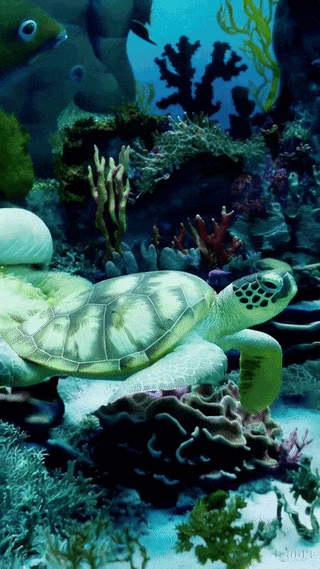

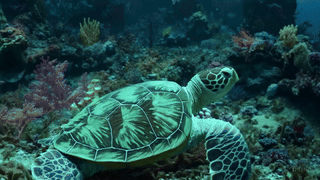
Improved Video Composition and Framing
Furthermore, Sora shows significant improvements in video composition and framing. By training on native ratios, Sora can better grasp video composition and framing design. Compared to models that crop all training videos into squares, Sora can more accurately maintain the full view of the video's theme. For example, for widescreen format videos, Sora can ensure the main content always stays in the viewer's sight without showing only part of the theme like some models do. This not only improves the visual quality of generated videos but also enhances the viewing experience.
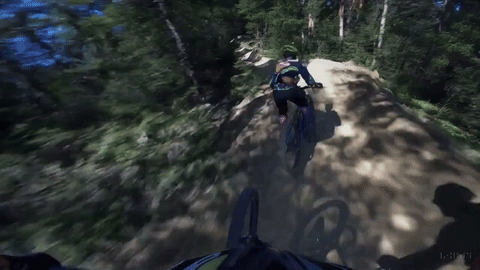
Language Understanding and Video Generation
Sora's deep text understanding capability is another important feature. Utilizing advanced text parsing technology, Sora can accurately understand users' text instructions and generate characters and vivid scenes with rich details and emotions based on these instructions. This capability makes the transition from brief text prompts to complex video content more natural and smooth. Whether it's a complex action scene or delicate emotional expression, Sora can accurately capture and present them.

Multimodal Input Processing
Finally, Sora's multimodal input processing capability is also noteworthy. Besides text prompts, Sora can also accept static images or existing videos as input, extending content, filling missing frames, or performing style transfers. This capability greatly expands Sora's application range, not only for creating video content from scratch but also for secondary creation of existing content, providing users with more creative space.
First Input
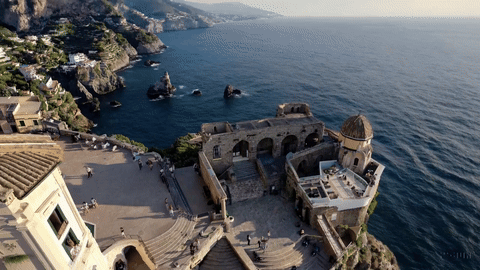
Second Input

1+2=3, Video Synthesis, Start!
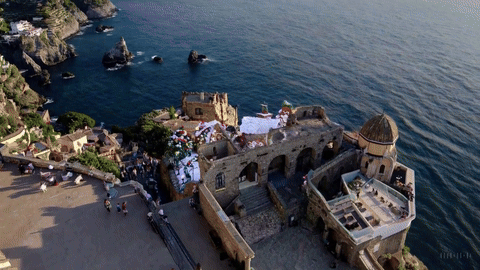
Through these four aspects of technical features and innovations, Sora establishes its leading position in the field of video generation. Whether in supporting video formats, improving video composition, understanding language, or processing multimodal inputs, Sora shows its powerful capability and flexibility, making it a strong tool for creative professionals in various fields.
Sora can generate videos with dynamic camera movements and simulate simple world interactions. For example, it can generate a video of a person walking, showing 3D consistency and long-term coherence.
Simulation Capability
Sora's simulation capability shows unique advantages in the field of AI video generation. Here are its key capabilities in simulating real-world dynamics and interactions:
3D Consistency
Sora can generate videos with dynamic camera movements, meaning it can capture actions not only in 2D images but also present objects and characters' movements from a 3D perspective. Imagine, as the camera rotates around a dancing character, you can see the person's movements from different angles, and each movement and background remains in the correct spatial position. This ability demonstrates Sora's deep understanding of three-dimensional space, making generated videos visually more realistic and vivid.
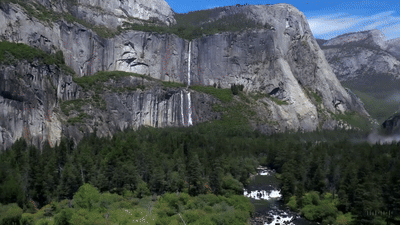
Long-term Coherence
Maintaining character, object, and scene coherence and logical consistency over multiple shots in a long video is a challenge. Sora excels in this aspect, accurately maintaining the appearance and attributes of characters across multiple shots in the video. This includes not only the characters' appearance but also their behavior and interaction with the environment. For example, if a character starts wearing a red shirt, the shirt will remain consistent in different parts of the video. Similarly, if a video depicts a character walking from one table to another, even if the perspective changes, the relative position and interaction of the character with the table will remain accurate, showing Sora's strong ability to maintain long-term coherence.

World Interaction Simulation
Further, Sora can simulate simple interactions between characters and the environment, such as dust rising when a person walks, or changes in paint on a canvas when painting. These small details greatly enhance the realism of video content. For example, when a character is painting in the video, Sora can not only generate the action itself but also ensure each stroke leaves a mark on the canvas, which accumulates over time, showing Sora's meticulous handling of real-world interactions.

Through these technical features, Sora can generate video content that not only simulates dynamic visual effects but also captures deeper, consistent interaction patterns with our daily life experiences. Despite challenges in handling complex physical interactions and maintaining long-term coherence, Sora has already shown significant capabilities in simulating simple world interactions, paving the way for future AI technology development, especially in understanding and simulating real-world dynamics.
Discussion and Limitations
Although Sora, as OpenAI's latest video generation AI model, has made significant progress in simulating real-world dynamics and interactions, it still faces some limitations and challenges. Here are the main limitations of Sora and ways to overcome these challenges.
Limitations in Simulating the Physical World
While Sora can generate dynamic scenes of a certain complexity, it still has limitations in accurately simulating the physical world. For example, for complex physical interactions such as the detailed process of glass shattering or scenes involving precise mechanical movements, Sora sometimes fails to accurately reproduce them. This is mainly because Sora's current training data lacks enough instances for the model to learn these complex physical phenomena.
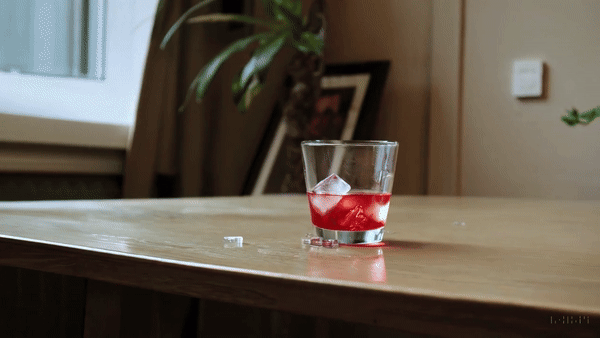
Strategies to Overcome Challenges:
- Expand Training Dataset: Integrate more high-quality video data containing complex physical interactions to enrich the samples Sora learns from.
- Integrate Physics Engines: Incorporate physics engines into Sora's framework, allowing the model to reference physical rules when generating videos, improving the realism of physical interactions.
Difficulties in Generating Long Videos
Another challenge Sora faces in generating long videos is maintaining long-term coherence in video content. For longer videos, maintaining the continuity and logical coherence of characters, objects, and scenes becomes more difficult. Sora may sometimes produce contradictions in different parts of the video, such as sudden changes in characters' clothes or inconsistent object positions in the scene.

Strategies to Overcome Challenges:
- Enhance Temporal Coherence Learning: Improve training algorithms to enhance the model's ability to learn temporal coherence and logical consistency.
- Sequential Processing: Adopt a sequential processing method in video generation, generating videos frame by frame in chronological order to ensure each frame remains consistent with the previous and next frames.
Accurately Understanding Complex Text Instructions
While Sora performs well in understanding simple text instructions and generating corresponding videos, it sometimes struggles with complex text instructions containing multiple meanings or requiring precise depiction of specific events. This limits Sora's application in generating more complex creative content.
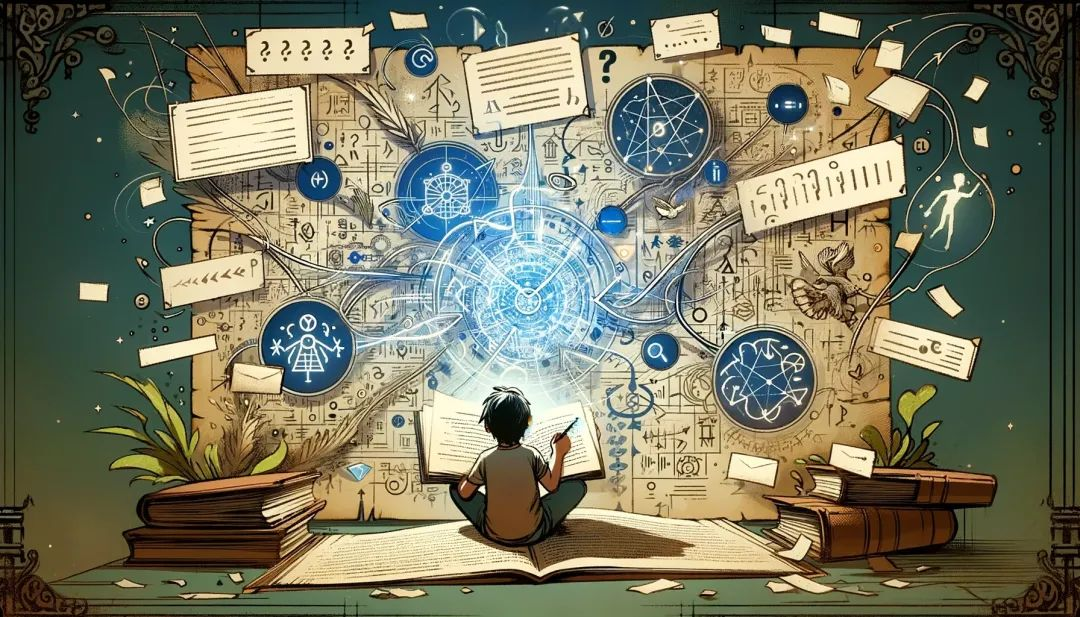
Strategies to Overcome Challenges:
- Improve Language Model: Enhance the complexity and accuracy of Sora's embedded language understanding model, enabling it to better understand and analyze complex text instructions.
- Text Preprocessing: Introduce advanced text preprocessing steps to break down complex text instructions into multiple simple tasks that are easier for the model to understand, generate them one by one, and finally integrate them into a complete video.
Training and Generation Efficiency
As a highly complex model, Sora's training and video generation time efficiency is a challenge. Generating high-quality videos usually takes a long time, limiting Sora's application in real-time or fast feedback scenarios.

Strategies to Overcome Challenges:
- Optimize Model Structure: Optimize Sora's architecture to reduce unnecessary computations and improve operational efficiency.
- Hardware Acceleration: Utilize more powerful computing resources and specialized hardware acceleration technologies to shorten video generation time.
Overall, while Sora's performance in video generation and simulating real-world interactions is impressive, there are still many challenges to overcome. By implementing the above strategies, we can believe that in the future, Sora will be able to overcome current limitations while maintaining innovation, demonstrating greater potential and broader applications.
